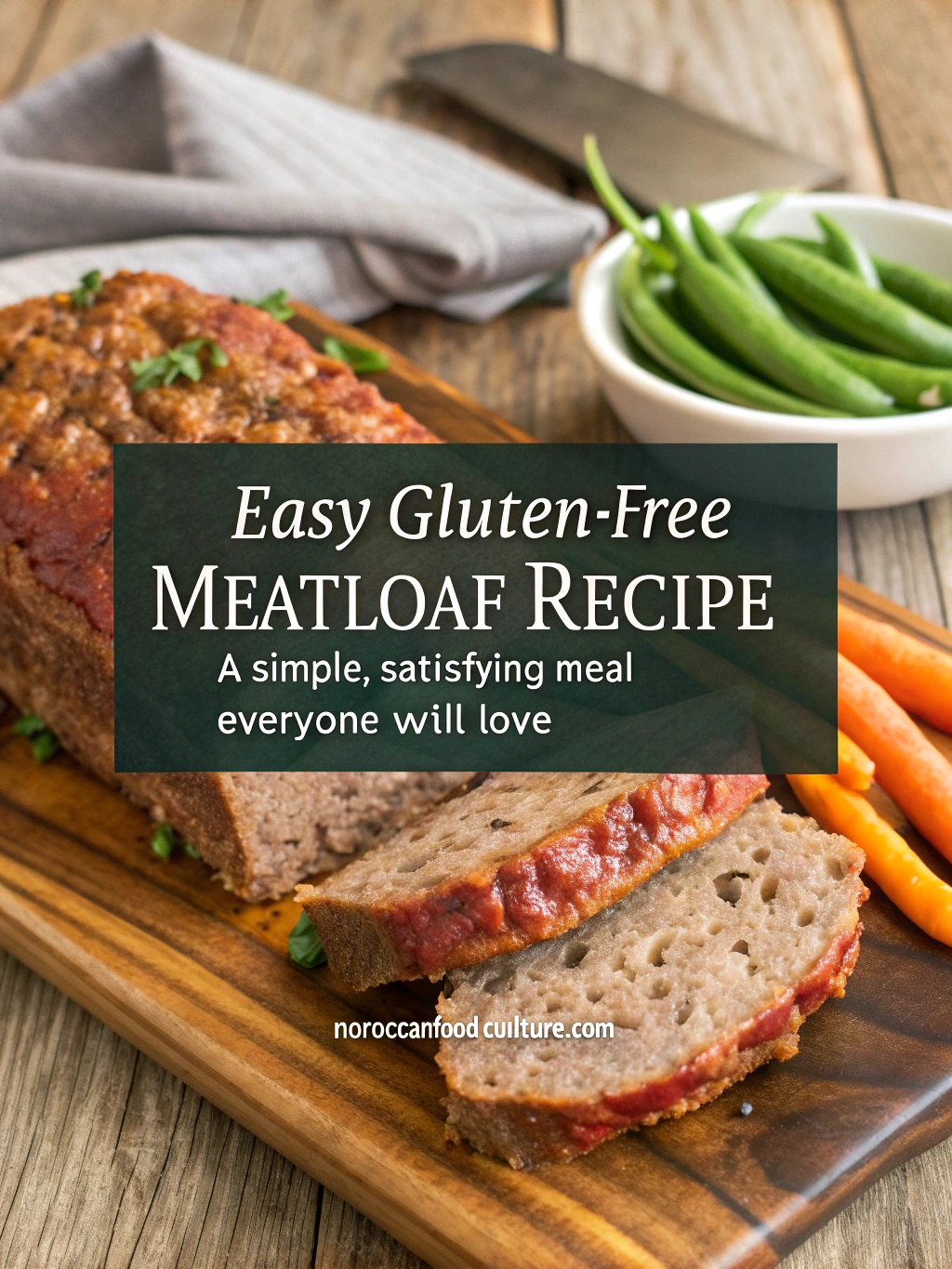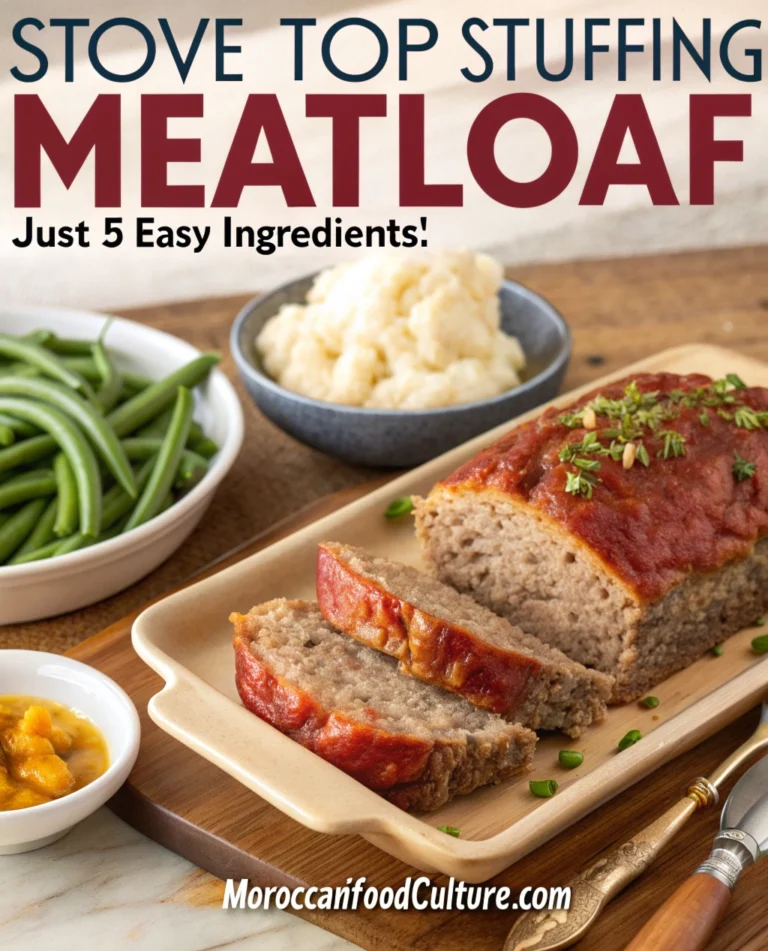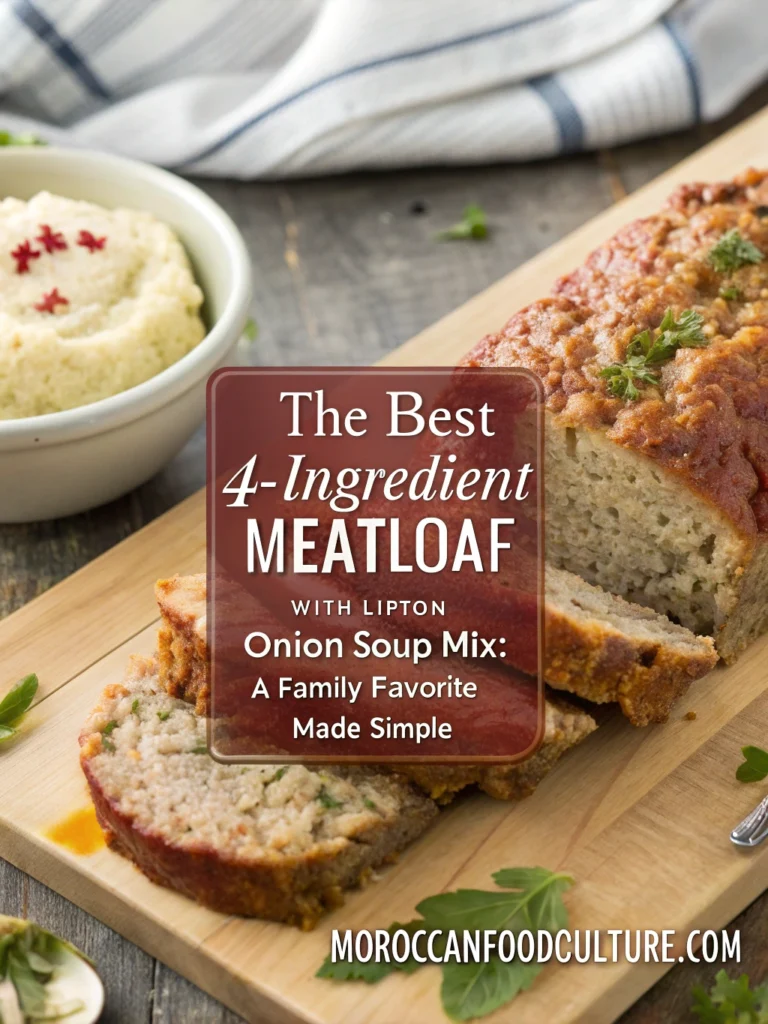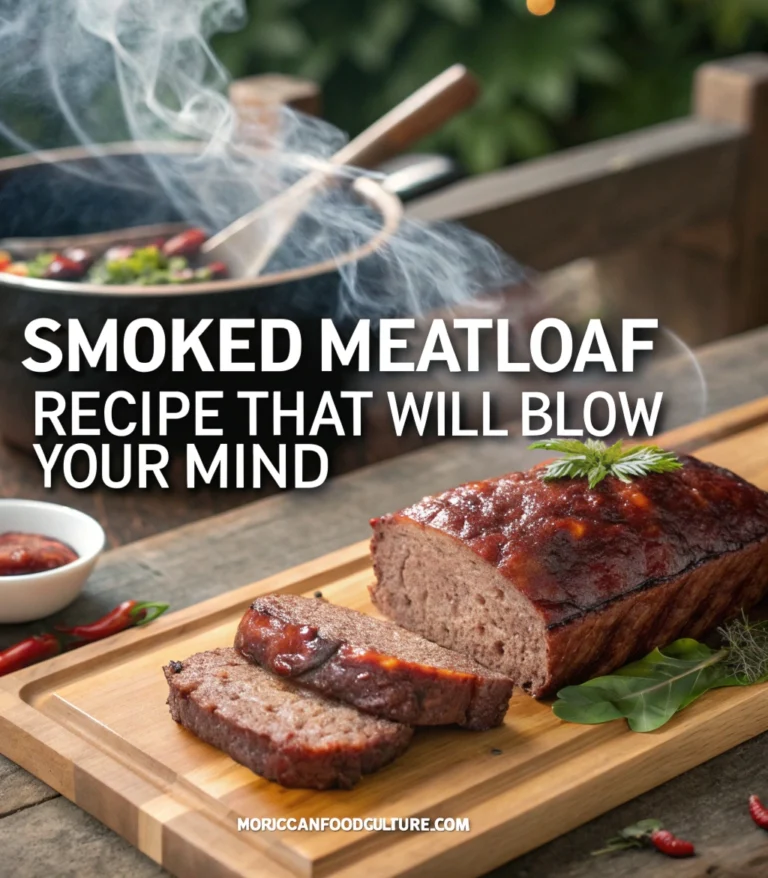Easy Gluten-Free Meatloaf Recipe – A Simple, Satisfying Meal Everyone Will Love
Introduction: Comfort Food Without the Gluten
There’s something about walking into a home filled with the aroma of meatloaf baking in the oven that instantly transports you back to childhood. For those navigating the challenges of gluten sensitivities or celiac disease, that sense of comfort can sometimes feel just beyond reach. Remember that disappointment when a favorite recipe suddenly becomes off-limits? The good news: creating a delicious gluten-free meatloaf doesn’t mean sacrificing flavor or that perfect, tender texture you crave.
Many home cooks discover that dietary restrictions actually open doors to culinary creativity. This simple, satisfying gluten-free meatloaf recipe might just become your new family tradition, proving that adapting to dietary needs doesn’t limit life’s simple pleasures – it enhances them with thoughtful ingredients and techniques that everyone at your table will appreciate.
Table of Contents
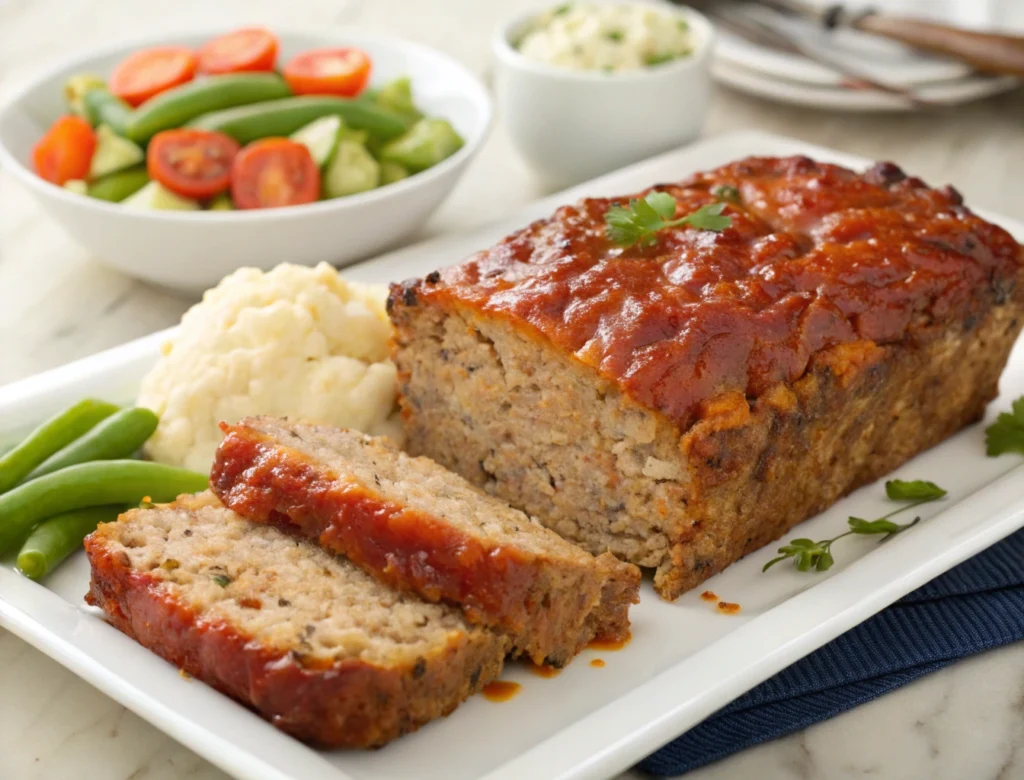
Why This Gluten-Free Meatloaf Recipe Works
The Challenge with Traditional Meatloaf
Traditional meatloaf recipes rely heavily on breadcrumbs or crackers as binding agents. These wheat-based ingredients serve a crucial purpose – they absorb moisture, provide structure, and create that distinctive tender-yet-sliceable texture that defines perfect meatloaf. Unfortunately, these same ingredients make conventional meatloaf completely unsuitable for those with gluten sensitivities or celiac disease.
Many novice cooks make the mistake of simply removing the binding agent altogether, which inevitably leads to disappointing results. Without a proper replacement for those wheat-based binders, you’ll end up with a dry, crumbly mess that falls apart on the plate – hardly the comforting meal you were hoping for.
Benefits of Our Gluten-Free Approach
This recipe tackles these challenges head-on with several smart substitutions:
- Certified gluten-free oats serve as an effective binder while maintaining essential moisture in the loaf
- A combination of almond flour and Parmesan creates structure without introducing gluten
- Carefully selected umami-rich ingredients enhance flavor without relying on gluten-containing additives or seasonings
- The cooking technique ensures the same comforting texture and taste as traditional meatloaf
The result? A gluten-free meatloaf that satisfies both nostalgic cravings and modern dietary needs – no compromise necessary.
Essential Ingredients for Perfect Gluten-Free Meatloaf
The Base
The foundation of any excellent meatloaf begins with the protein selection. This recipe combines:
- 2 pounds ground beef (85% lean recommended for optimal moisture and flavor)
- 1 pound ground pork (adds richness and prevents the common problem of dryness)
- 3 large eggs (provides crucial structure and binding properties)
This particular ratio achieves the perfect balance between richness and texture. The 85% lean beef contains enough fat to keep your meatloaf juicy without becoming greasy, while the addition of ground pork introduces a subtle sweetness and additional moisture that pure beef recipes often lack.
Gluten-Free Binding Ingredients
Here’s where the magic happens – these carefully selected ingredients replace traditional breadcrumbs without sacrificing texture:
- 1 cup certified gluten-free rolled oats (provides excellent moisture absorption)
- ½ cup almond flour (adds structure while keeping the texture tender)
- ½ cup grated Parmesan cheese (ensures proper protein binding and adds savory depth)
The combination of these three ingredients creates a binding system that mimics the function of breadcrumbs remarkably well. The oats absorb and retain moisture, the almond flour provides structure without becoming gummy, and the Parmesan not only adds flavor but helps everything hold together during cooking.
Flavor Enhancers
These ingredients transform your meatloaf from merely edible to memorably delicious:
- 1 medium onion, finely diced (creates aromatic foundation)
- 2 cloves garlic, minced (provides depth without overwhelming)
- 2 tablespoons tomato paste (adds concentrated umami and subtle acidity)
- 1 tablespoon gluten-free Worcestershire sauce (verify certification)
- 1 teaspoon dried thyme (introduces earthy, aromatic notes)
- 1 tablespoon fresh parsley, chopped (brightens overall flavor profile)
- Salt and pepper to taste (always season properly!)
Each element plays a specific role in building the complex flavor profile that makes people come back for seconds. The combination of aromatics, herbs, and umami-rich ingredients creates depth that many gluten-free recipes sadly lack.
Glaze (Optional but Recommended)
The finishing touch that elevates this meatloaf to dinner-party worthy:
- ½ cup ketchup (verify gluten-free status)
- 2 tablespoons brown sugar (creates caramelization and balances acidity)
- 1 tablespoon apple cider vinegar (adds brightness and cuts through richness)
- 1 teaspoon gluten-free Dijon mustard (provides complexity and subtle heat)
This glossy, tangy-sweet topping caramelizes beautifully during baking, creating an irresistible exterior that contrasts perfectly with the tender interior of your meatloaf.
Equipment Needed
Success begins with having the right tools at hand. Here’s what you’ll need:
| Equipment | Purpose | Notes |
|---|---|---|
| Large mixing bowl | Combining ingredients | Glass or stainless steel recommended for easy cleaning |
| Loaf pan | Shaping the meatloaf | 9×5 inch standard size works perfectly |
| Meat thermometer | Ensuring proper cooking | Essential for food safety and perfect doneness |
| Mixing spoon | Gently combining ingredients | Helps avoid overmixing, which toughens meatloaf |
| Measuring cups and spoons | Accurate portioning | Ensures consistent results every time |
While you might be tempted to eyeball measurements, precision matters particularly when working with gluten-free recipes, where the balance of ingredients affects structural integrity.
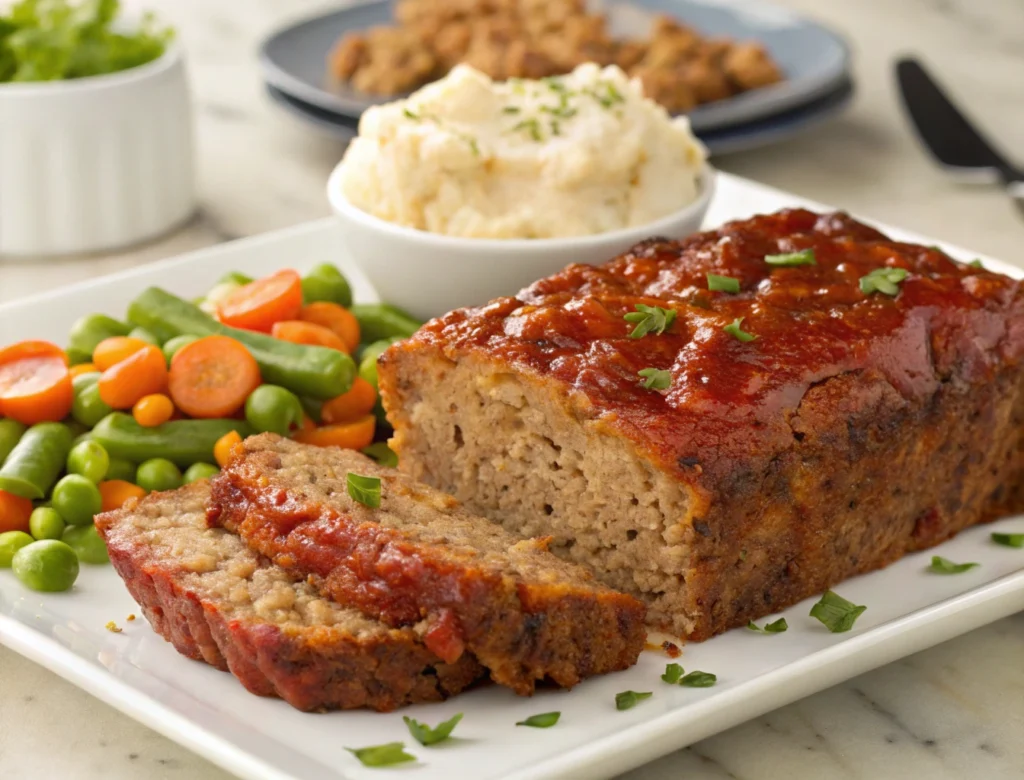
Step-by-Step Instructions
Preparation (15 minutes)
Begin by setting yourself up for success:
- Preheat your oven to 350°F (175°C)
- Line a 9×5 inch loaf pan with parchment paper, leaving overhang on the long sides for easy removal
- Finely dice the onion and mince the garlic – uniform, small pieces ensure even distribution and proper cooking
- In a small bowl, combine gluten-free oats, almond flour, and Parmesan to create your binding mixture
Take your time with these preparatory steps – they lay the foundation for excellent results.
Mixing the Meatloaf (10 minutes)
The technique here matters tremendously:
- In a large bowl, gently combine ground beef and pork with your fingertips, breaking apart any clumps
- Add eggs and mix lightly until just incorporated
- Incorporate the oat mixture and remaining ingredients in stages, distributing evenly
- Mix with hands until just combined – stop as soon as ingredients are distributed
The cardinal rule of meatloaf: overmixing leads to tough, dense results. Handle the mixture gently, almost like you would a delicate pastry dough, stopping as soon as ingredients are evenly distributed.
Cooking Process (60-70 minutes)
Patience yields perfect results:
- Shape mixture into the prepared loaf pan or form a freestanding loaf on a parchment-lined baking sheet
- If using glaze, spread half over the top before baking
- Bake for 45 minutes at 350°F
- Add remaining glaze and bake for an additional 15-25 minutes
- Use a meat thermometer to verify internal temperature reaches 160°F at the center
The two-stage glazing process creates deeper flavor and better caramelization than a single application. The meat thermometer removes all guesswork – 160°F ensures both safety and optimal texture.
Resting and Serving (10 minutes)
Resist the temptation to slice immediately:
- Allow meatloaf to rest for 10 minutes before slicing – this redistributes juices
- Use parchment paper handles to lift gently from loaf pan
- Slice into 1-inch portions using a sharp knife
- Serve while still warm alongside your favorite sides
This resting period isn’t optional – it’s essential for maintaining moisture and ensuring clean slices that hold their shape on the plate.
Nutritional Information
Understanding the nutritional profile helps you incorporate this recipe into your meal planning:
| Nutrient | Amount per Serving | % Daily Value |
|---|---|---|
| Calories | 320 | – |
| Protein | 28g | 56% |
| Carbohydrates | 11g | 4% |
| Dietary Fiber | 2g | 8% |
| Total Fat | 19g | 29% |
| Saturated Fat | 7g | 35% |
| Sodium | 390mg | 16% |
| Iron | 3mg | 17% |
*Based on an average serving size of 1/8 of the meatloaf. Values may vary based on specific ingredients used.
Compared to many gluten-free prepared foods, which often contain excessive carbohydrates to compensate for texture, this meatloaf delivers significant protein while keeping carbohydrates reasonable – making it suitable for various dietary approaches beyond gluten-free.
Tips for Gluten-Free Meatloaf Success
Common Pitfalls to Avoid
Even experienced cooks sometimes encounter these challenges:
- Overmixing the meat mixture creates a dense, rubbery texture resembling sausage rather than tender meatloaf
- Using cold ingredients straight from the refrigerator leads to uneven cooking and poor binding
- Skipping the resting period after baking results in crumbly slices and juice puddles on the plate
- Assuming all Worcestershire sauce brands are gluten-free (many contain malt vinegar derived from barley)
Allow ingredients to come to room temperature before mixing for more even cooking and better binding results. Always verify ingredient labels, particularly with condiments and seasonings where gluten often hides.
Ingredient Substitutions
Need to accommodate additional dietary considerations? Try these tested alternatives:
- Egg-Free Option: Replace eggs with 3 tablespoons of ground flaxseed mixed with 9 tablespoons of water (allow to gel for 15 minutes before using)
- Dairy-Free Option: Substitute 4 tablespoons nutritional yeast plus 1 tablespoon olive oil for Parmesan cheese
- Oat-Free Option: Use quinoa flakes instead of rolled oats in equal measures for those sensitive to avenin
- Meat Options: Create a lighter version with ground turkey or chicken (add 2 tablespoons olive oil to compensate for reduced fat content)
These substitutions have been carefully tested to maintain the integrity of the recipe while accommodating additional dietary needs.
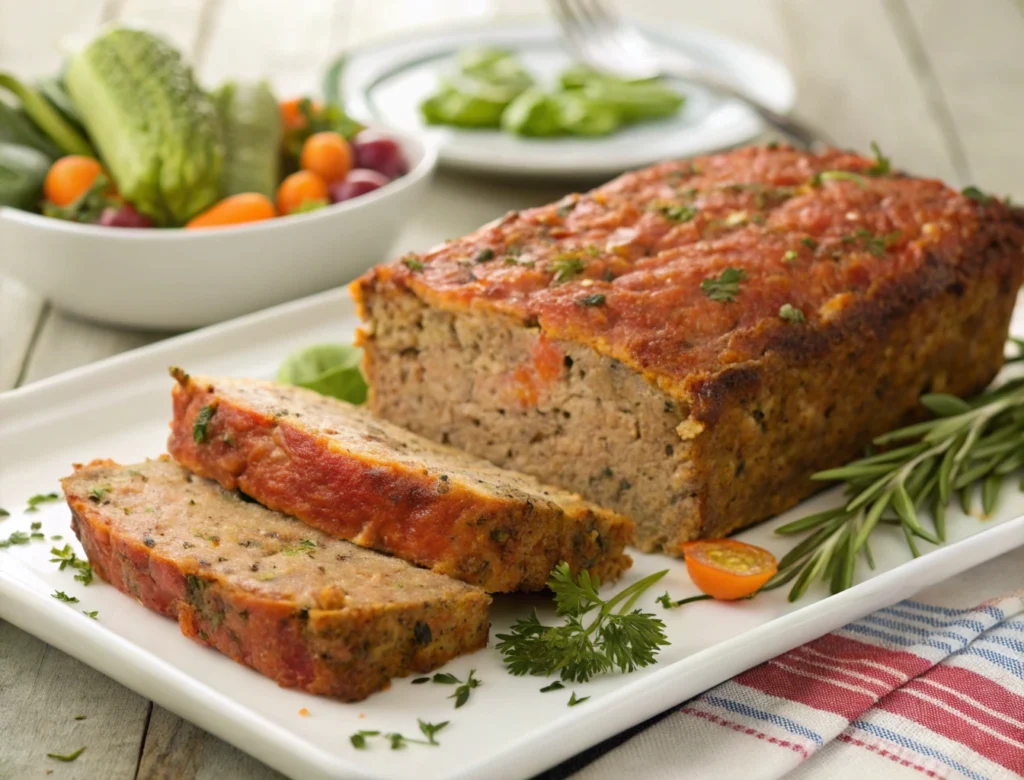
Serving Suggestions
Perfect Gluten-Free Side Dishes
Complete your meal with these complementary sides:
- Creamy mashed potatoes with roasted garlic
- Roasted seasonal vegetables tossed with herbs and olive oil
- Crisp green salad with homemade gluten-free vinaigrette
- Gluten-free dinner rolls for sopping up juices
The classic pairing of meatloaf with potatoes exists for good reason – the creamy texture contrasts beautifully with the hearty meatloaf, while the mild flavor provides a perfect canvas for those delicious meat juices.
Leftover Transformation Ideas
Make the most of your cooking efforts with these creative repurposing ideas:
- Create indulgent gluten-free meatloaf sandwiches on toasted gluten-free bread with mayo and caramelized onions
- Crumble leftover meatloaf into tomato sauce for an instant meat sauce perfect for gluten-free pasta
- Dice and add to morning frittatas or breakfast hash with potatoes for a protein-packed start
- Form cold leftover meatloaf into balls, roll in gluten-free flour, and pan-fry for reinvented “meatballs”
Planning for these second-meal opportunities actually improves your kitchen efficiency and budget management.
Storing and Freezing Instructions
Refrigeration
Proper storage extends freshness and safety:
- Store completely cooled meatloaf in an airtight container
- Keeps fresh for up to 4 days when properly refrigerated
- Reheat individual slices in microwave (covered) or in a 325°F oven until warmed through
Slicing before refrigerating allows you to reheat only what you need, preserving the quality of the remaining portions.
Freezing Methods
Multiple approaches offer convenience based on your needs:
- Whole loaf: Cool completely, wrap tightly in freezer paper, then aluminum foil
- Individual slices: Flash freeze on baking sheet, then transfer to freezer bags (allows portioning)
- Uncooked mixture: Shape into loaf, wrap tightly, freeze for up to 3 months (thaw completely before baking)
- Always label with date and contents to prevent mystery freezer packages
Properly frozen meatloaf maintains excellent quality for up to three months – making this recipe perfect for batch cooking sessions.
Why Choose Homemade Gluten-Free Meatloaf
Health Benefits
Beyond simply avoiding gluten, this homemade approach offers substantial advantages:
- Complete control over ingredients quality and sourcing
- Absence of hidden gluten, additives, preservatives, and excessive sodium
- Customizable to accommodate multiple dietary needs within one household
- Significantly higher protein content than many commercial gluten-free options
Many store-bought gluten-free products compensate for texture and flavor with excessive additives, sugars, and sodium – a homemade approach eliminates these concerns entirely.
Cost Effectiveness
The economic advantages might surprise you:
- More economical than pre-made gluten-free options, which often carry premium pricing
- Creates multiple meals from one cooking session, reducing overall food preparation time
- Reduces reliance on expensive specialty gluten-free products
- Allows bulk purchasing of ingredients that can be used across multiple recipes
While the initial grocery shop might seem substantial, the cost per serving and versatility of leftovers make this approach remarkably budget-friendly compared to alternatives.
Frequently Asked Questions About Gluten-Free Meatloaf
Q: How can I tell if my gluten-free meatloaf is fully cooked?
A: The most reliable method is using a meat thermometer to ensure the internal temperature reaches 160°F at the center. The meatloaf should also feel firm to the touch, and juices should run clear, not pink. Visual inspection alone can be misleading with gluten-free meatloaf, as color isn’t always an accurate indicator of doneness.
Q: Why is my gluten-free meatloaf falling apart?
A: This typically happens when there isn’t enough binding agent or when the loaf is sliced before adequate resting. Make sure you’re using the full amount of eggs and gluten-free oats specified. Always allow the meatloaf to rest for at least 10 minutes after baking – this cooling period helps it set properly before slicing. If problems persist, try reducing the vegetable content slightly, as excess moisture can compromise structure.
Q: Can I make this gluten-free meatloaf recipe ahead of time?
A: Absolutely! You can prepare the entire mixture up to 24 hours ahead and refrigerate it in the loaf pan covered with plastic wrap. Simply bring it closer to room temperature before baking. You can also freeze the uncooked gluten-free meatloaf for up to 3 months – just thaw completely in the refrigerator before baking. This makes it perfect for meal prep sessions.
Q: What’s the best way to reheat leftover gluten-free meatloaf without drying it out?
A: For best results, slice the leftover meatloaf and reheat individual portions in a covered dish with a tablespoon of broth or water in a 325°F oven for about 15 minutes. This gentle reheating method preserves moisture. Microwaving is quicker but may result in slightly drier texture – if using the microwave, cover the slice with a damp paper towel and use medium power.
Q: Is this gluten-free meatloaf recipe suitable for celiac disease?
A: Yes, when made with certified gluten-free ingredients, this meatloaf recipe is safe for those with celiac disease. Always verify that your oats are specifically labeled “certified gluten-free” as conventional oats may have cross-contamination issues during processing. Double-check all condiments like Worcestershire sauce and ketchup for gluten-free certification, as these products sometimes contain hidden sources of gluten.
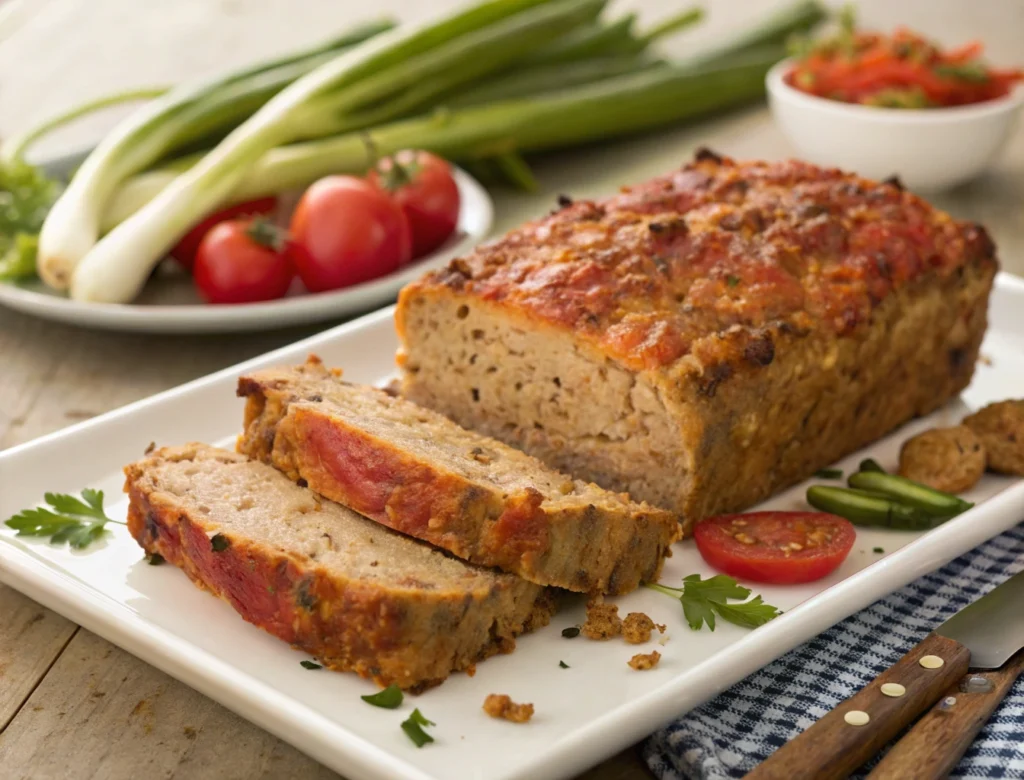
Conclusion: Embracing Gluten-Free Comfort Food
Creating a delicious gluten-free meatloaf doesn’t require culinary expertise – just thoughtful ingredient selection and attention to technique. This approachable recipe demonstrates that dietary restrictions need never mean missing out on the foods that bring comfort and joy to your table. By understanding the science behind what makes a great meatloaf and making smart substitutions, you’ve now gained a versatile recipe that delivers on both flavor and texture.
Whether you’re cooking for someone with celiac disease, managing your own gluten sensitivity, or simply exploring more inclusive recipes for gatherings where dietary needs vary, this gluten-free meatloaf rises to the occasion. The beauty of this approach lies in its flexibility – once you understand the principles at work, you can adapt and personalize the recipe to suit your family’s preferences.
Why not make this recipe part of your regular rotation? The preparation is straightforward, the ingredients readily available, and the results consistently impressive. Your family might not even notice it’s gluten-free – they’ll just know it’s delicious.
Ready to try your hand at this satisfying gluten-free comfort food? Gather your ingredients today and fill your home with that irresistible aroma of homemade meatloaf baking – no gluten required. Then share your results with us in the comments below! We’d love to hear about your experience and any personal touches you added to make this recipe your own.
Have you given our recipe a try?
There are no reviews yet. Be the first one to write one.
